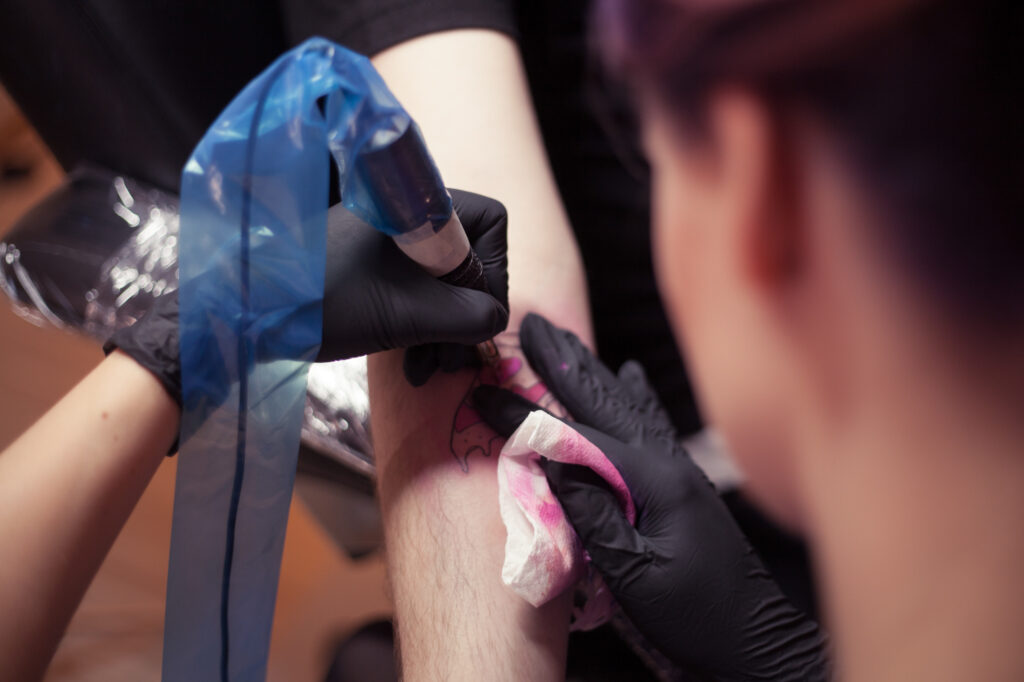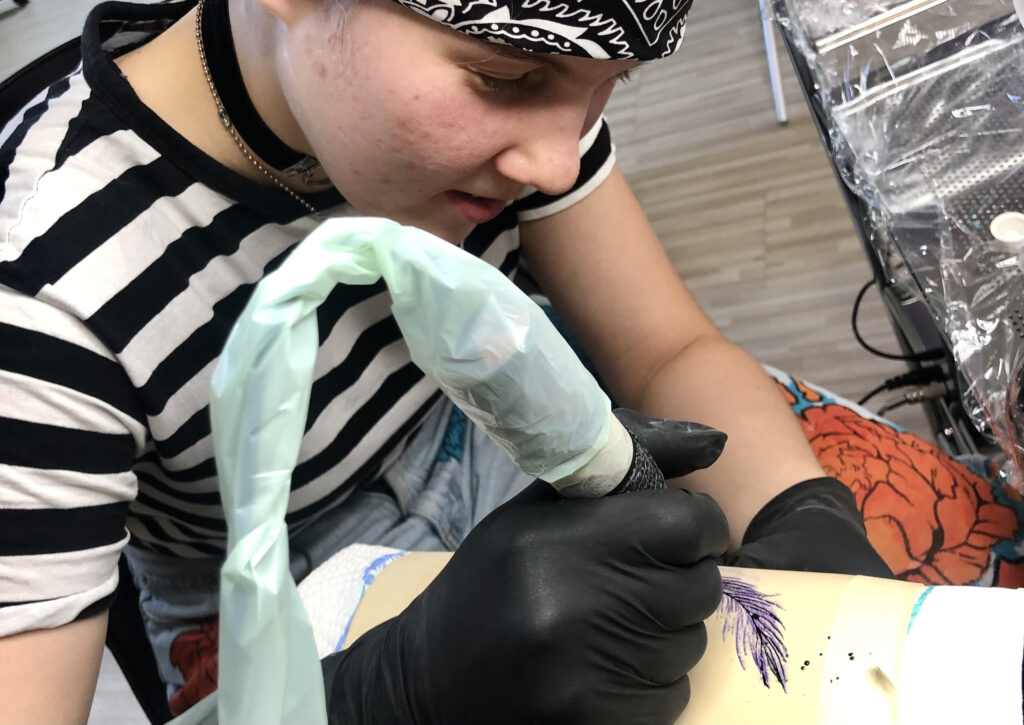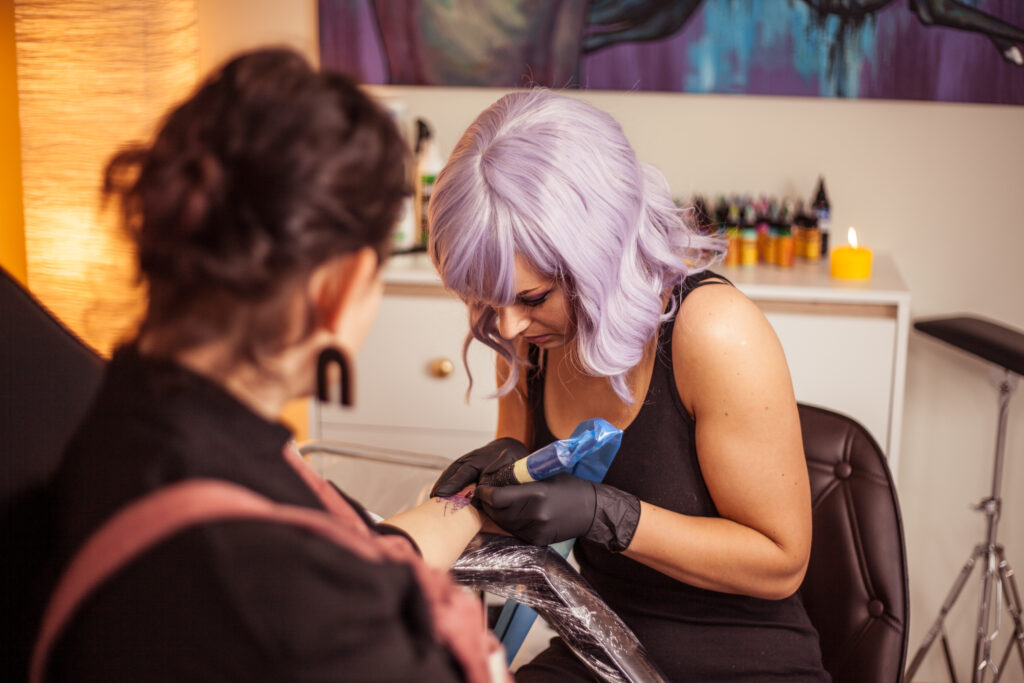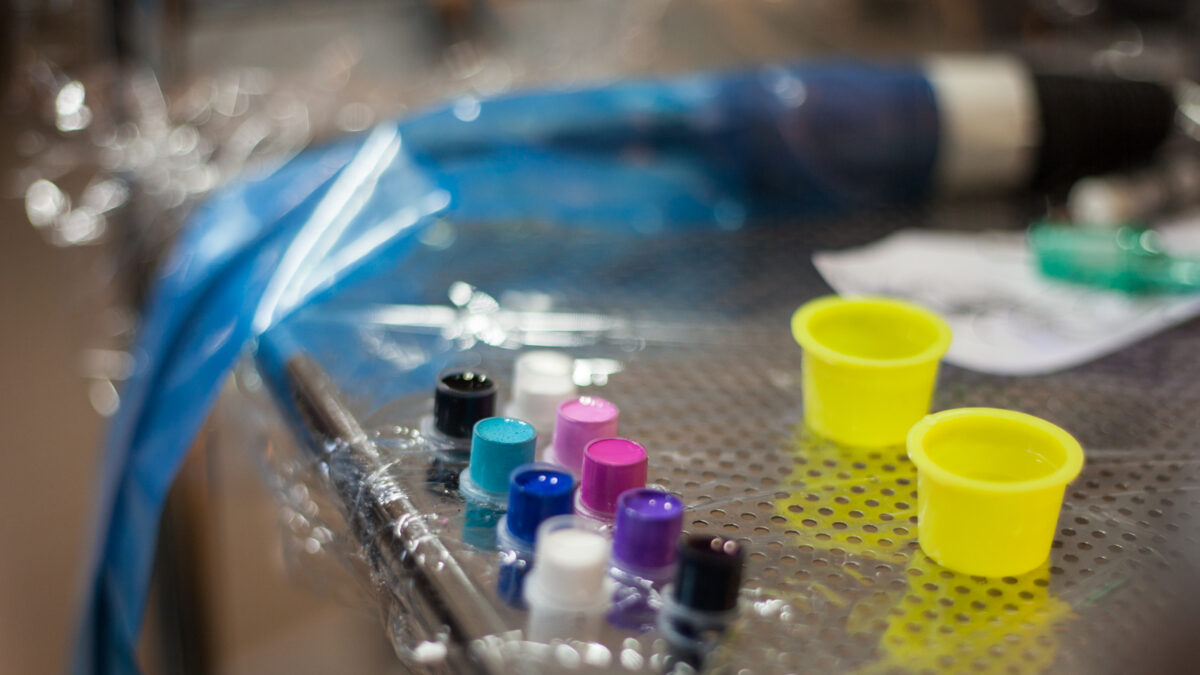During my nine years of tattooing, I have received a number of letters from people asking for advice on becoming a tattoo artist or coming to learn under my wing. Everyone interested has gotten a long individual answer.
I think now is the time to write a thorough post. Got to admit that I’ve been prolonging this. I’d really love to see a new generation of talented artists whose work brings a tear to my eye and I get excited over every message I get about this topic.
To be honest, time has also brought disappointment. Sometimes it seems that movies and TV shows have made tattooing out to be easy. I really want to motivate people that they could become awesome artists, but first it’s important to face reality. It’s necessary so that the time spent on learning isn’t wasted.

-
Do you want to become a tattoo artist or do you just like the idea of it?
Kat Von D, Miami Ink and other shows might have given the impression that simply starting to tattoo is enough to push the snowball. Exciting clients with dramatic stories, cash flow, blooming social life, demand for an artist’s work etc. The reality is that it takes years to properly master the technique. You have to learn about machines, needles, inks, techniques, different skin types, body parts etc.
How does a tattoo heal and why do they heal so badly at first? For the longest time, it’s total confusion and not knowing what you’re doing.
As for clients, it also takes long for them to establish trust in you and your style. Before that, many of them will try to dictate your every line, reconsider a hundred times and finally not show up. Or they find the price too high and try to negotiate it lower. I can’t speak for every tattoo artist, but that was my own experience and that of many others I have spoken to. It takes years.

-
Draw, draw, draw
One of the reasons for disappointment has been when a candidate’s portfolio is not worth the criticism. Or when it’s insufficient. I am always for drawing at any skill level, but the difference comes in when you want to offer your art as a service. A tattoo will remain on a person their whole life.
My question is always the following: what can you as an artist offer our tattoo scene? Estonia is filled with people tattooing black flowers and butterflies (not an insult, they are also needed). What new and different can you bring? If you can’t think of an answer, keep drawing. Nowadays it’s possible to tattoo Absolutely Anything, open your creative pores! Isn’t that the entire purpose of tattooing: to create something unique and so people come to you because no one else is doing it?
To be good at art, you don’t have to go to art school. You have to have the means and desire to draw daily. My whole life, I just drew for myself because I loved it as an activity. To be able to express myself. I started drawing more digitally at 14 years old. Striving to become a tattoo artist began at 18. People progress at different tempos, but hopefully my example gives some idea of how big of an interest you need to have in art.

-
Do more than what is expected of you
For some tattoo interns, I have noticed that they view the teacher as a boss and expect tasks from them – if it’s done, it’s done. Excuses tend to be of greater number than actions. Your teacher isn’t actually your boss, but someone who has given you the chance to do what you’ve wanted to do. You are the one striving to become a tattoo artist. If the wanting isn’t big enough, it’s not worth dealing with.
Promote yourself, post every day, answer tattoo parlor e-mails, learn to communicate with clients, ask questions, more questions, engage your thoughts. For example, come up with the next event to throw at the studio, promote this event, follow foreign tattoo artists, try to claw yourself into guest spotting for them, go to tattoo conventions etc. There are a thousand things you can do to independently become a successful tattoo artist. It’s not just learning one tattoo technique, but it’s marketing, communication skills, knowing clients and finding your target audience.

-
A lot of patience
If not already derived from the preceding, you need to have patience. Most students I know have left within a month or two because they realized how much hard work it is. How much time it takes before you can make a comfortable living and before clients stop ghosting you last minute.
Choose this only if it really is your most favorite thing you could ever want to do in the world. Then you won’t stop after a couple unpleasant clients. During the years, you will start getting clients that value your work highly. But first, you need to find your target demographic.

-
Progress is never linear
This brings me to my next point – every job and client is completely unique. You learn something new from absolutely every drawing and tattoo. Every client’s skin is different, every body part’s skin is different and every client’s tattoo heals differently.
It’s a constant rollercoaster from feeling like you’re getting somewhere to when this damn purple ink just won’t stay in the skin. Or you need to figure out if the tattoo healed badly because you did a poor job or because the client soaked at a SPA during the weekend. Is there so much blood because of the needle stroke length, speed or your own tempo? All a matter of experience, time and patience. It’s hard, just like any other job with people involved. Your work will affect them their entire life.

-
Costs
I get a lot of questions about equipment costs. It depends on the style of your tattoos. Coil machines may be cheaper than rotary, nowadays a decent rotary is (arguably?) 400-700€. Individual inks cost 15-50€ depending on unit price. Needles may be somewhere between 10-50€ per pack, depending on the needle and producer.
I use a new school rotary machine with cartridge style needles, which are much heftier in price than classical ones. Since I do pretty big pieces, I have a vast array of needle choices.
I also do very colorful pieces and have found my favorites over time, which I always need to have on hand. For example, 5 different shades of blue, all irreplaceable.
When I first started, I got to use my teacher’s things and began buying more of my own once I made a bit of money. I have done the same with my apprentices. This allows you to learn what you need.
Costs also include cleaning supplies, papers, cover materials, plastics, creams, razors, coffee etc. Not to mention rent and bills. This is different for everyone, depending on the size of your studio, how much you work, your style, colors etc. My example gives an approximate understanding.
Now that you have considered everything, I want to tell you to fantasize and act! The purpose of this post wasn’t to scare you away, but to urge you to approach things from the right angle.
Becoming a good tattoo artist isn’t impossible if persistence and consistency are taken along for the road. You may rely on advice and assistance for smoother waters.
Personally, I am already so excited for new faces and styles that could be added to our tattoo scene!

The question of ‘How to become a tattoo artist?’ is something that many creative souls ponder, and your blog has provided a comprehensive guide for those eager to pursue this unique career. I appreciate the emphasis on apprenticeships and the importance of continuous learning in the ever-evolving world of tattoo art. It’s encouraging to see a resource that not only outlines the steps but also stresses the significance of patience and perseverance. Any advice on overcoming common challenges faced by aspiring tattoo artists would be greatly appreciated!